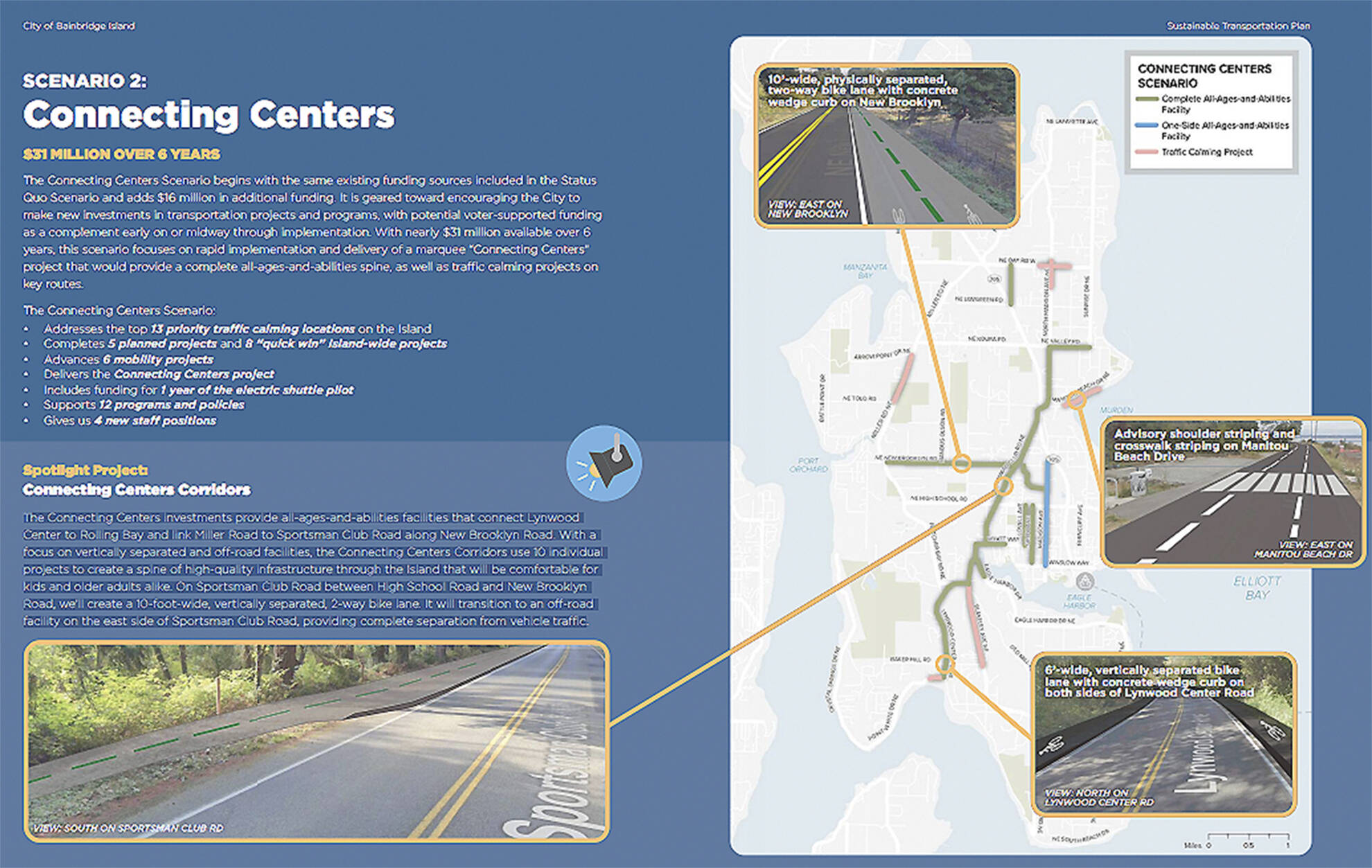Of three options brought forward by Bainbridge Island city staff, the City Council recently chose Scenario 2.
So what exactly is in that?
The option in the Sustainable Transportation Plan calls for $31 million to be invested over six years to connect all the island’s business centers so they can be accessed by everyone in multiple ways.
In general, it addresses the top 13 priority traffic calming locations and completes five planned projects and eight “quick win” islandwide projects. It also advances six mobility projects, includes one year of an electric shuttle, supports 12 programs and policies and gives the city four new staff positions.
It would provide all-ages-and-abilities facilities that connect Lynwood Center to Rolling Bay and link Miller Road to Sportsman Club Road along New Brooklyn Road. With a focus on vertically separated and off-road facilities, the corridors use 10 projects to create a spine of infrastructure.
On Sportsman Club Road between High School and New Brooklyn roads, a 10-foot-wide, vertically separated, two-way bike lane will be created. It will transition to an off-road facility on the east side of Sportsman Club Road, providing complete separation from vehicle traffic.
It would also create 6-foot-wide vertically separated bike lanes on both sides of Lynwood Center Road. It would provide shoulder and crosswalk striping on Manitou Beach Drive.
A “complete streets” project includes wider sidewalks, protected bike lanes and traffic calming on Madison Avenue between Winslow Way and Highway 305.
A Transportation Commission will be formed to make recommendations to the City Council; commission members will then serve on various working groups. Community education is also part of the plan, along with a gravel road maintenance program to provide safe places to walk, roll or ride an off-road bike.
Three travel option programs are planned. Safe routes would focus on eliminating barriers to help people reach their destinations safely and comfortably. Rideshare would include partnerships with agencies like the school and park districts to share rides. The E-Transportation sharing program would offer electric vehicles, bikes and/or scooters at mobility hubs to increase access to modes of sustainable transportation.
The free electric shuttle pilot project would run five days a week, 12 hours a day. Work also will be done on the Sound to Olympics Trail.
A number of mobility hubs also are planned where there would be bus shelters and waiting areas; travel information; bike parking; shared e-bikes and e-scooters; loading zones; charging stations; walking and biking connections; and amenities such as kiosks.
A major goal is to help reduce carbon emissions by 90% by 2045.
Funding would come from vehicle tab increases OK’d for transportation improvements. Transportation Impact Fees also could be collected from new development.



